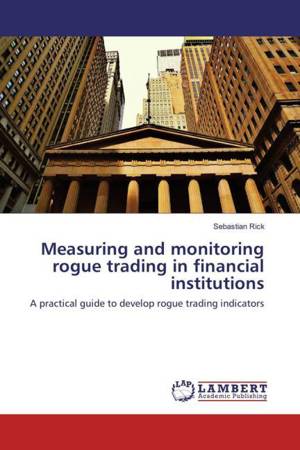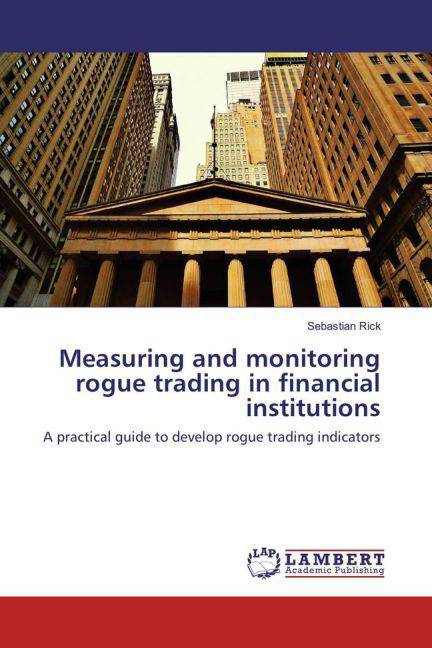
Je cadeautjes zeker op tijd in huis hebben voor de feestdagen? Kom langs in onze winkels en vind het perfecte geschenk!
- Afhalen na 1 uur in een winkel met voorraad
- Gratis thuislevering in België vanaf € 30
- Ruim aanbod met 7 miljoen producten
Je cadeautjes zeker op tijd in huis hebben voor de feestdagen? Kom langs in onze winkels en vind het perfecte geschenk!
- Afhalen na 1 uur in een winkel met voorraad
- Gratis thuislevering in België vanaf € 30
- Ruim aanbod met 7 miljoen producten
Zoeken
Measuring and monitoring rogue trading in financial institutions
A practical guide to develop rogue trading indicators
Sebastian Rick
Paperback | Engels
€ 23,95
+ 47 punten
Omschrijving
On any given day, it is possible for traders to operate outside of the established norms of a bank or financial institution. The vast majority do not get caught. In fact, many are profitable as a result of their unauthorized trading activities (commonly referred to as "rogue trading"), but they have nonetheless not followed the norms and put their institution at risk by their actions. A few begin to lose money, are caught and dismissed quietly. A much smaller group loses large amounts of money before they are caught. These are the ones that make the headlines. This book starts by unraveling the phenomenon rogue trading by applying Schneider's (2007) Leipzig process model for white-collar criminal activity in a new context. Based on recent research as well as the reports of Swiss Financial Market Supervisory Authority (2012), PricewaterhouseCoopers (2008) and Bank of England (1995), it then develops step by step rogue trading indicators by means of examples, intended to be used to measure and monitor rogue-trading in financial institutions.
Specificaties
Betrokkenen
- Auteur(s):
- Uitgeverij:
Inhoud
- Aantal bladzijden:
- 64
- Taal:
- Engels
Eigenschappen
- Productcode (EAN):
- 9783659928543
- Uitvoering:
- Paperback
- Afmetingen:
- 150 mm x 220 mm
- Gewicht:
- 102 g

Alleen bij Standaard Boekhandel
+ 47 punten op je klantenkaart van Standaard Boekhandel
Beoordelingen
We publiceren alleen reviews die voldoen aan de voorwaarden voor reviews. Bekijk onze voorwaarden voor reviews.









